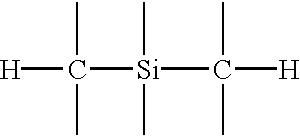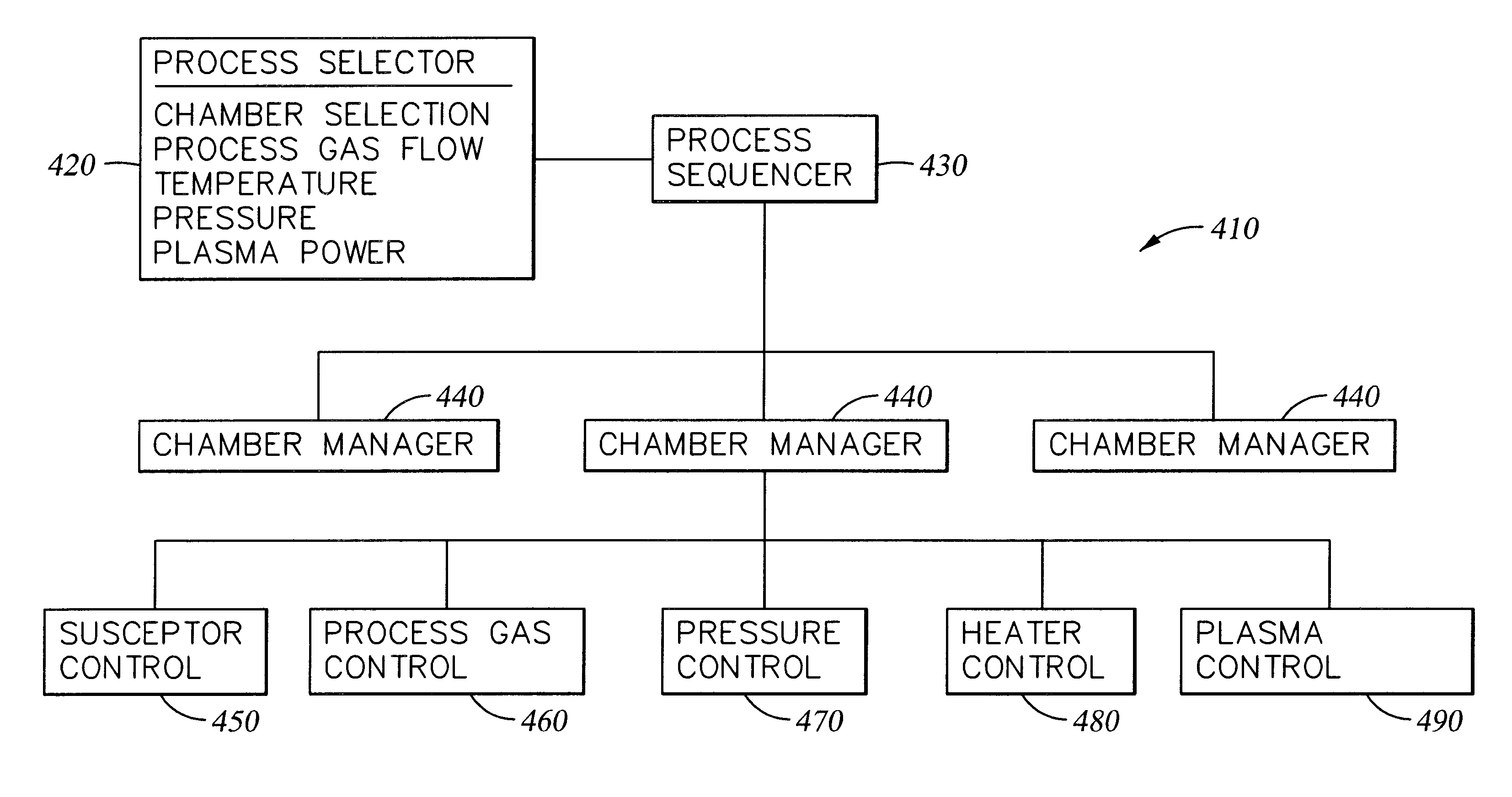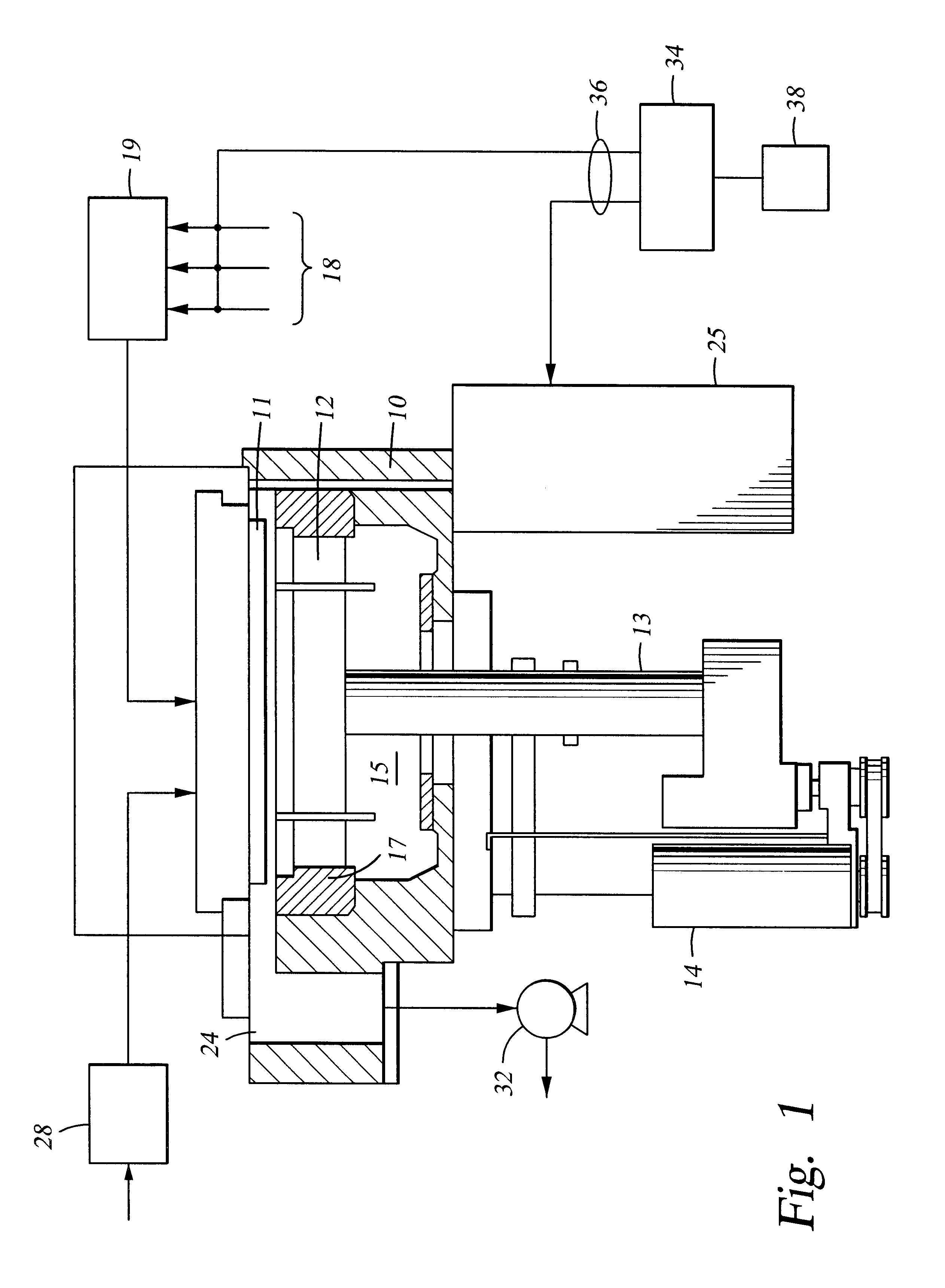Method of depositing low k films using an oxidizing plasma
a technology of oxidizing plasma and low k, applied in the direction of chemical vapor deposition coating, semiconductor/solid-state device details, coatings, etc., can solve the problems of damage to the device structure, shrinkage and cracking of films that retain substantial moistur
- Summary
- Abstract
- Description
- Claims
- Application Information
AI Technical Summary
Problems solved by technology
Method used
Image
Examples
Embodiment Construction
The following examples demonstrate the deposition of oxidized organosilicon films having smooth surfaces, good hydrophobic properties, high cracking thresholds, and low dielectric constants on 200 mm diameter substrates. This example was undertaken using a chemical vapor deposition chamber, and in particular, a "CENTURA DxZ" system which includes a solid-state RF matching unit with a two-piece quartz process kit, both fabricated and sold by Applied Materials, Inc., Santa Clara, Calif.
Example of Low Dielectric Constant Film with Smooth Surface
An oxidized trimethylsilane film was deposited at a chamber pressure of 4.0 Torr and a temperature of 350.degree. C. from reactive gases which were flowed into the reactor as follows:
The substrate was positioned 220 millimeters from the gas distribution showerhead and 600 W of high frequency power (13.56 MHz) was applied to the showerhead for plasma enhanced deposition of an oxidized trimethylsilane layer at an observed rate of about 7000 .ANG. / ...
PUM
| Property | Measurement | Unit |
|---|---|---|
| Fraction | aaaaa | aaaaa |
| Time | aaaaa | aaaaa |
| Time | aaaaa | aaaaa |
Abstract
Description
Claims
Application Information
 Login to View More
Login to View More - R&D
- Intellectual Property
- Life Sciences
- Materials
- Tech Scout
- Unparalleled Data Quality
- Higher Quality Content
- 60% Fewer Hallucinations
Browse by: Latest US Patents, China's latest patents, Technical Efficacy Thesaurus, Application Domain, Technology Topic, Popular Technical Reports.
© 2025 PatSnap. All rights reserved.Legal|Privacy policy|Modern Slavery Act Transparency Statement|Sitemap|About US| Contact US: help@patsnap.com



